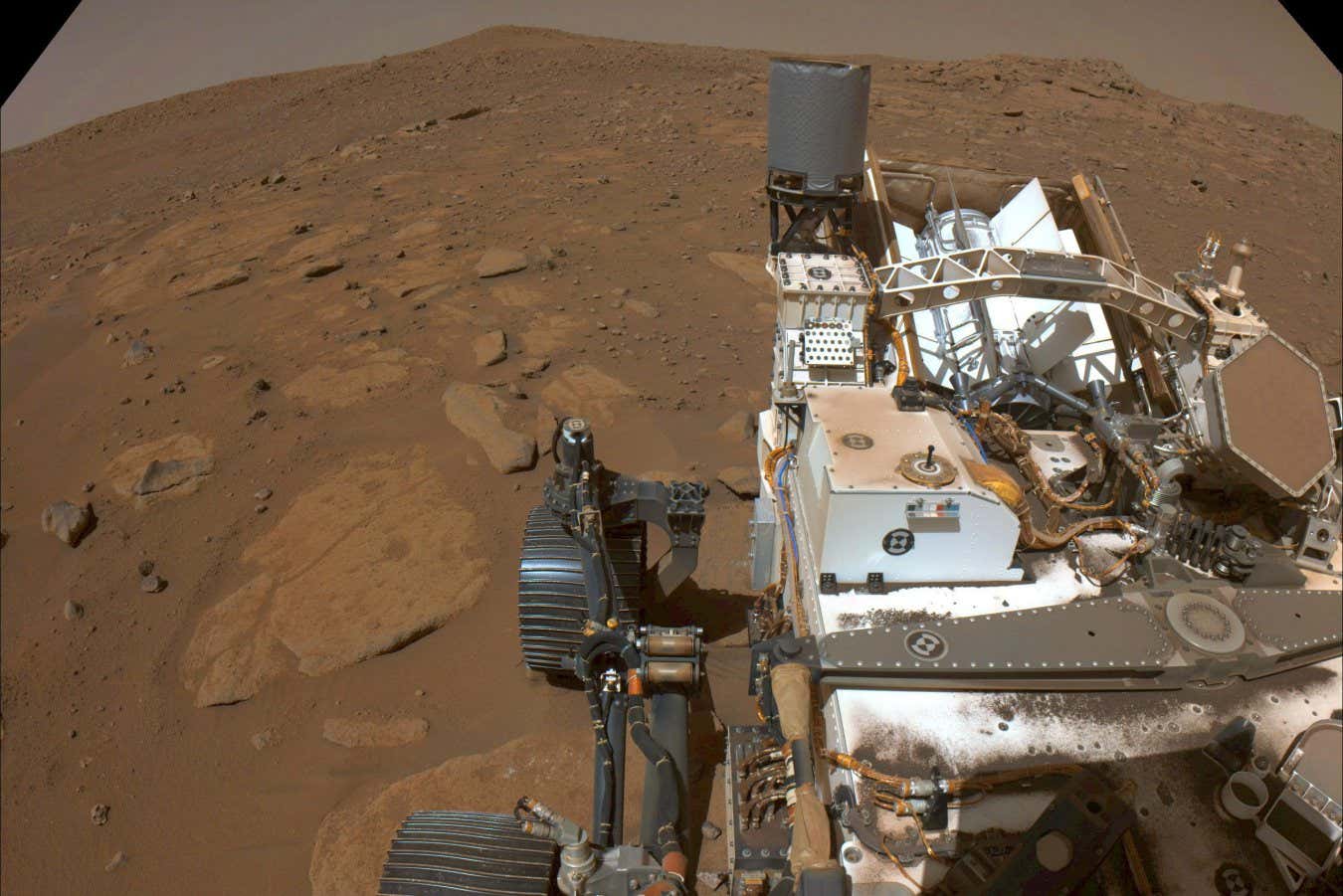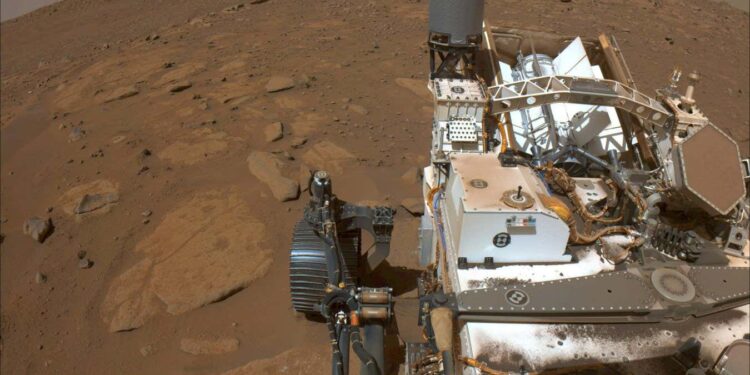
NASA’s Perseverance rover on Mars
NASA/JPL-Caltech
Has NASA found life on Mars?
In a word, no. But last year, NASA’s Perseverance rover found signs in an ancient rock that could point to life having existed on the Red Planet billions of years ago. And now we have more evidence in the form of small nodules of unusual minerals in several clay-rich rocks that could have a biological origin.
As exciting as the discoveries are, we need to proceed with caution: astrobiologists have a seven-step scale called the Confidence of Life Detection that puts a hard number on the quality of evidence. Even with the previous discovery and today’s announcement combined, we remain on step one.
What has NASA actually found?
Last year, Perseverance was exploring a lake bed called Bright Angel in Mars’s Jezero crater when it came across a rock with unusual markings called “leopard spots” and “poppy seeds”. On Earth, these markings are considered to be telltale signs of ancient microbial activity. Leopard spots are millimetre-sized dark blots with a circular rim, while poppy seeds are even smaller dark blotches.
Both types of marking are found within the rock, which has been named Cheyava Falls after a waterfall in the Grand Canyon. And both types are sandwiched between white reams of calcium sulphate – a mineral that typically forms in the presence of water, which is another prerequisite for life.
Today, NASA has announced we have further intriguing discoveries: clay-rich rock samples discovered at two sites – one called Sapphire Canyon, found in Bright Angel again, and another called Masonic Temple – that have tiny, green-toned specks of chemically-reduced iron phosphate and iron sulphide minerals.

A map showing Perseverance’s path on Mars
NASA/JPL-Caltech/University of Arizona
What makes these related to life?
On Earth, we know that both leopard spots and poppy seeds can be linked to microbial life: the reduction and oxidisation (redox) reactions that generate energy for such life forms leave coloured deposits of iron and sulphur in “reduced form”, meaning they have gained electrons.
The marks in Cheyava Falls could have been caused by microbes or by another reaction that takes place only at high temperatures and isn’t linked to the presence of life. But Perseverance’s onboard instruments were used earlier this year to work out the chemical composition of the marks, showing that they do contain minerals in a reduced form. This suggests that the biological explanation is more likely.
Now, on top of that, we have these new rocks. The green flecks of chemically reduced material could, just like the previous sample, indicate the presence of life. And even more excitingly, their distribution is uneven and directly related to the concentration of organic compounds – something that certainly adds weight to the idea that they were created by living organisms.
Joel Hurowitz at Stony Brook University in New York and his colleagues write in a paper on the new analysis, published today in the journal Nature, that “the Bright Angel formation contains textures, chemical and mineral characteristics, and organic signatures that warrant consideration as ‘potential biosignatures’.” But, crucially, they haven’t proved that living organisms were present on Mars.
How could we confirm the results?
We have all but exhausted our options for analysing Cheyava Falls and the new samples on the surface of Mars. What we really need to do is bring them back to Earth for a closer look.
Perseverance is designed to store interesting samples and hand them over to a future mission that will physically bring them back to Earth, but these plans have been hit by a series of setbacks in the past year or so. US President Donald Trump’s proposal to slash NASA’s budget is likely to mean that the Mars Sample Return mission is abandoned and any samples collected so far remain on the surface of the Red Planet, with no further analysis possible.
Team member Sanjeev Gupta at Imperial College London says the new discovery will add to the case for funding a sample-return mission, something NASA is very keen on. “This is the first time [we’ve seen] something that says, ‘Oh, this could be formed due to biological processes’ – and that’s why the excitement is there. This is a sample we need to return,” he says.
“Ultimately, the return of samples from Mars for study on Earth, including the Sapphire Canyon sample collected from the Bright Angel formation, would provide the best opportunity to understand the processes that gave rise to the unique features,” writes the team.
Is there anything more we can do from Mars?
When life emerged on Earth, it spread quickly. So one thing we can do even without a sample-return mission is to look for repetition. Can we find other rocks with the same features?
“We’re now outside Jezero crater looking at very ancient rocks just to see if we have evidence of similar sorts of processes or features. There’s always a potential to go back to the same site and see if we can find more occurrences,” says Gupta. “But really it’s going to be about getting the sample back to Earth and analysing in Earth laboratories. That’s the key.”
Topics:
Source link : https://www.newscientist.com/article/2495776-nasa-hasnt-found-life-on-mars-yet-but-signs-are-promising/?utm_campaign=RSS%7CNSNS&utm_source=NSNS&utm_medium=RSS&utm_content=home
Author :
Publish date : 2025-09-10 16:00:00
Copyright for syndicated content belongs to the linked Source.



